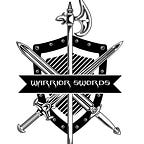Viking Axe: A Symbol of Strength and Craftsmanship
The Viking axe, an iconic symbol of Viking warfare and craftsmanship, played a pivotal role in shaping the success and legacy of the Norse people. Known for its functionality and lethal effectiveness, the Viking axe was not only a weapon of war but also a versatile tool for daily life. In this blog, we will delve into the history, design, types, and significance of the Viking axe, exploring its importance in Norse culture.
The Historical Significance of the Viking Axe
The Viking Age (793–1066 AD) was a period marked by extensive exploration, trade, and conquest. Viking warriors, known for their fierce combat skills, relied heavily on the axe as their primary weapon. Unlike the swords of the time, which were expensive and often reserved for the elite, axes were more affordable and accessible to the average Viking. This affordability made the axe a common weapon among the Norsemen, and its effectiveness in battle was proven time and time again.
Vikings used axes in various combat situations, from close-quarters fighting to large-scale battles. Their ability to cleave through armor and shields made them formidable weapons, striking fear into the hearts of their enemies. Beyond the battlefield, axes were also used for woodcutting, building, and other practical tasks, making them indispensable tools in Viking society.
Design and Features of the Viking Axe
The design of the Viking axe was both functional and strategic, crafted for maximum impact in combat. There were several key features that made Viking axes distinct:
1. Lightweight and Easy to Handle
Viking axes were generally lighter than swords, allowing for quick and powerful swings. This made them ideal for fast-paced combat, where speed and agility were crucial. The lighter weight also meant that warriors could carry multiple axes, using one for combat and others as throwing weapons.
2. Wide Blade with a Bearded Design
Many Viking axes featured a wide blade with a bearded design, meaning that the lower part of the blade extended downwards. This bearded design served two purposes: it allowed for greater control when hooking an opponent’s shield or weapon, and it provided a larger cutting surface for striking.
3. Long or Short Handles
Viking axes came in a variety of sizes, with both long and short handles. Long-handled axes, often referred to as “Dane axes,” were used in battle for powerful, sweeping strikes that could break shields or armor. Short-handled axes were more commonly used for one-on-one combat and could be wielded with greater precision.
4. Durable Materials
The heads of Viking axes were made from iron, while the handles were typically crafted from sturdy wood like ash or oak. This combination of materials made the axes durable and reliable in both combat and daily tasks.
Types of Viking Axes
There were several different types of Viking axes, each serving a unique purpose. Here are the most common types:
1. Dane Axe
The Dane axe, also known as the two-handed axe, was one of the most iconic weapons of the Viking Age. It featured a long handle and a broad, curved blade that could deal devastating blows. These axes were often used by elite warriors and were particularly effective in breaking through enemy defenses.
2. Bearded Axe
The bearded axe, with its distinctive extended lower blade, was commonly used for both combat and woodworking. Its versatile design allowed it to be used for hooking, cutting, and slicing, making it a favorite among Viking warriors and craftsmen alike.
3. Throwing Axe
Throwing axes, also known as “francisca” by some historians, were smaller, lighter axes that could be thrown at enemies from a distance. Vikings were highly skilled at using these axes as both ranged and melee weapons, adding a new layer of unpredictability to their battle strategies.
The Viking Axe in Norse Culture
The Viking axe was not just a tool of war; it was a symbol of power and status. Many Viking warriors were buried with their axes, signifying their importance in life and death. In fact, some of the most well-preserved artifacts from the Viking Age are intricately decorated axes found in burial sites. These ornate designs often featured carvings of animals, symbols, and runes, reflecting the warrior’s beliefs and accomplishments.
Axes were also featured prominently in Norse mythology. The god Thor, for example, was known for wielding a hammer, but other gods and heroes were often depicted with axes as their weapon of choice. This further cemented the axe’s role as a symbol of strength and divine power.
How Viking Axes Are Used Today
Additionally, Viking axes have become popular in pop culture, with their iconic designs appearing in movies, television shows, and video games. Whether as a symbol of the fierce Viking warrior or a practical tool, the legacy of the Viking axe lives on in modern society.
Conclusion
The Viking axe is a testament to the ingenuity and craftsmanship of the Norse people. Its dual role as both a weapon and a tool made it an essential part of Viking life, and its influence can still be seen today. Whether you’re interested in Viking history, weaponry, or Norse culture, the Viking axe remains a powerful symbol of the strength, resilience, and resourcefulness of the Viking Age.
